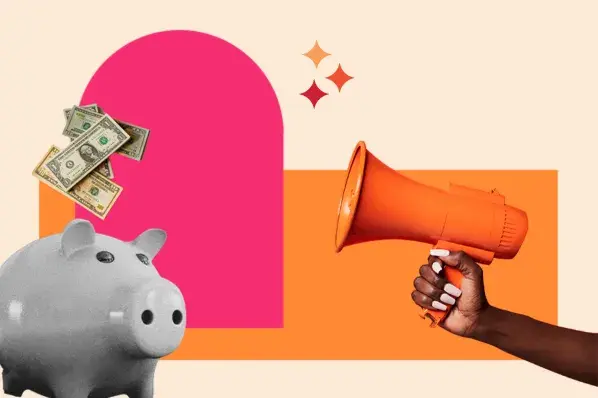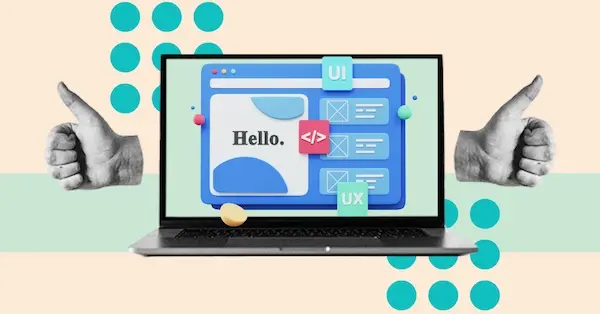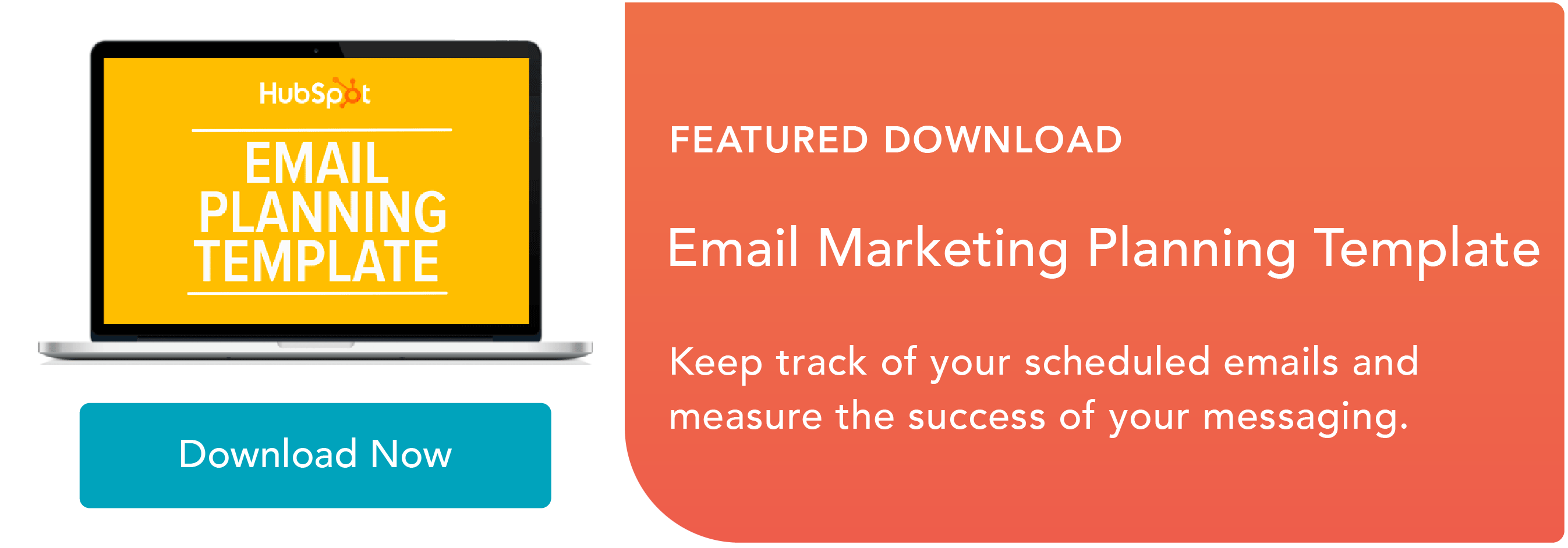4 Types of Emails That Get the Most Engagement According to Marketers [+4 Emails That Fail]
As the person sending the HubSpot marketing emails, I know the importance of crafting email sequences that nurture relationships, drive website visits, and encourage sales. I’ve learned the hard way that the types of emails you send significantly impact engagement.
![4 Types of Emails That Get the Most Engagement According to Marketers [+4 Emails That Fail]](https://blog.hubspot.com/hubfs/Untitled%20design%20%2856%29.jpg#keepProtocol)
As the person sending the HubSpot marketing emails, I know the importance of crafting email sequences that nurture relationships, drive website visits, and encourage sales. I’ve learned the hard way that the types of emails you send significantly impact engagement.
With 87% of marketers planning to maintain or increase their investment in email marketing, it’s an excellent time to ensure you maximize your email ROI.
We wanted to dive deep into what marketers are doing right (and not so right), so we ran a study asking marketers about their results from different types of emails.
After several all-nighters reviewing the results, I’ve put together takeaways and tips to power your email marketing strategy.
Table of Contents:
- Types of Emails with the Highest Engagement
- Types of Emails with the Lowest Engagement
- Finding the Right Types of Emails for Your Marketing Strategy
But which of these marketing mail types get the most engagement, and which fall flat? Let’s dig into what our survey found.
4 Types of Emails With the Highest Engagement
The four types of marketing emails with the highest engagement are multimedia, basic, discount, and articles.
1. Multimedia Emails

In our survey, 41% of marketers said that multimedia emails captured the highest engagement, making it the best email type on the list. People generally spend less than 10 seconds reading brand emails, so you need to catch their attention fast.
I like to use multimedia elements like videos, photos, GIFs, and interactive elements to grab my audience’s attention, and I’m not the only one.
Chad DeBolt, search marketing director at marketing agency Surchability, says, “Visual content is processed faster and can convey complex information succinctly. For instance, embedding a video tutorial in an email led to a 20% increase in click-through rates for one of our campaigns.”
When I use multimedia in welcome emails, it makes a strong first impression with new subscribers. I also use enticing graphics to ensure ongoing engagement with email newsletters and lead nurturing campaigns.
Why multimedia emails work:
- Visuals like images, videos, and GIFs quickly capture attention.
- Multimedia elements support more dynamic storytelling.
- Interactive elements encourage engagement.
2. Basic Emails
The word “basic” may sound boring to some, but in my experience, regular emails do well because they are familiar.
Almost everyone communicates with friends and family via email at some point, so basic emails get a cognitive read bias.
Other marketers see the same, with 38% finding that basic emails highlighting relevant links provide the highest engagement.
In sales campaigns, I find a series of emails with light imagery the most effective.
For example, this simple and clear email from YouTube quickly highlights the benefits of YouTube Premium, offers free introductory pricing, and leads up to a specific action without feeling overly promotional.

Because they read like personal emails, these basic formats are a staple in most of my sales funnel automations where I want to follow up and build relationships with potential customers.
Why basic emails work:
- The lack of distractions makes it easier to bring focus to a call-to-action.
- Minimal use of brand imagery feels less promotional.
- A conversational style supports relationship-building.
3. Discount Emails

Everyone loves to save, myself included, so I’m not surprised promotional emails with discounts made our top four list. In fact, for 32% of marketers, these emails are the number one email type for delivering engagement.
When I’m looking to drive sales, I find that promotional codes, sales announcements, and sending free resources can provide a nice boost or pull double duty and act as reengagement emails.
However, in my experience, discounts alone don’t guarantee high engagement. Greg Zakowicz, senior ecommerce expert at marketing automation firm Omnisend, recommends that marketers include value-adds, social proof, and product recommendations to increase the engagement of offer emails.
Zakowicz says, “By using customer data such as website browsing and purchase history, brands can automatically insert customer-specific recommended products into each email, increasing the likelihood they engage.”
I’ve also found that including the promotion or special offer in your email subject lines increases open rates.
Why discount emails work:
- Discounts can help convert new customers and re-engage inactive subscribers.
- Subscribers may search inboxes specifically for discounts.
- Limited-time offers increase urgency through fear of missing out (FOMO).
4. Article Emails
Article format emails are a newcomer to this list, with 24% of marketers listing them as their highest engagement message type.
They’re also a great email example of how information gets attention. Similar in theory to blog content marketing, the articles come across less as a sales email and more as a helpful friend.
I like that these emails provide value right away by including the original content in the email instead of making readers click through to a website.
And because these emails don’t ask for a purchase, I find them to be excellent lead-nurturing emails. Since there’s no click-through to track, it also simplifies my metrics tracking to open stats.
I particularly like this example from Bloomreach which dives right into a relevant topic for its ecommerce audience. They use the article to provide valuable content, gain credibility, and create relevance around their links so readers are more likely to engage.

Why article emails work:
- Readers get value right away without having to go to a website.
- Thought leadership doesn’t come across as sales-y.
- Articles provide relevant content for in-text links.
4 Types of Emails With the Lowest Engagement
There’s no perfect marketing email, but some fall far short compared to the highest-performing marketing email types (and may even increase the dreaded unsubscribe rates).
Let’s dive into which types of emails received the least votes from marketers when asked about performance.
1. Product/Service Announcement Emails

Only 21% of marketers say emails announcing new products yield the most engagement. These can be less effective because they’re more sales-y than other types, and if the product isn’t relevant to a subscriber, they’ll ignore the message in their inbox.
Personally, I see announcement emails as a balancing act. Generic product announcements without a hook are almost like cold calling. However, it can pay off if I lean into personalization and advanced segmentation to get the announcement to targeted customers.
For example, let’s say you own a pet store and want to announce a new line of cat food. If you divide your email list into segments based on pet type, you can pull lists of cat owners and dog owners. Then, email the cat owners only and increase your engagement chances.
Your shopping cart abandonment lists are also great resources for targeting customers. Use abandoned cart emails to increase engagement by highlighting products your subscribers have already viewed.
Be careful to avoid sending too many, though, as too many notifications of new messages can turn customers away.
How to improve results:
- Leverage behavior-based automation triggers, such as abandoned shopping carts.
- Use advanced segmentation for increased relevance.
- Personalize the subject line or body copy.
2. Industry Content Emails

Except for specialized industries like aviation, most customers don’t care what’s happening in our world; they are more interested in the product and service. Only 16% of marketers get the most engagement from industry-topic emails.
In my experience, I find that they lack urgency compared to other messages in my inbox. I’m likely to move these to my “Read Later” folder and completely forget about them.
That said, I still like these types of emails as a low-stakes way to nurture leads or when I’m using my email marketing strategy to establish thought leadership. The key to leveraging these kinds of emails is to let your audience know how it helps them and tie it back to your products and services.
Offering an opt-in choice for industry-related emails can also help improve engagement with this type of email by letting customers self-target. I’ve seen this most commonly for news outlets and publication websites, like the Washington Post below, but it can work for ecommerce and B2B as well.
How to improve results:
- Let readers choose to opt in for thought leadership newsletters.
- Tie the content back to an audience pain point or goal.
3. Emails Promoting Contests/Competitions
I admit this one surprised me when I was digging through the data. Only 16% of marketers said their highest engagement emails promoted contests and competitions.
The combined effort to enter and the expectation of low winning odds may be the culprit. Plus, if you’re sending these emails during peak work hours, there’s a good chance your subscribers have higher-priority tasks on their minds.
While these types of emails may not have the highest engagement rates, they can still be a fun way to encourage subscriber participation when used in moderation.
For example, I recently received an email from Canva challenging subscribers to design a galaxy using their new Text to Image feature.

Instead of trying to sell people the new feature, Canva encourages people to try it out by using a fun competition. As a result, people who don’t have an immediate need or use for the feature now have a reason to explore it right away.
To get the most out of email contests and competitions, I integrate social media and user-generated content to encourage engagement in a fun way — especially for existing customers.
Asking people to post media with a contest hashtag is an excellent way to get people to engage and create user-generated content (UGC) for your brand.
How to improve results:
- Integrate social media so your audience can see others participating.
- Tie contests into relevant product or service features.
- Send these emails outside of work hours.
4. Event Announcements
Falling far behind the pack, today’s busy schedules make event announcements hard to sell. Only 10% of marketers say upcoming event announcements for conferences, live streams, and webinars get the most engagement.
In my experience, time crunch and lack of urgency work against this type of email. Unlike a discount email that lets your readers save money now, an event sign-up promises the benefit later and competes with other tasks on their schedule.
I like to focus on relevance and creating urgency to boost the engagement for these emails. For example, this event invitation from Figma leverages an early bird discount offer to add immediate value and put email subscribers on the clock, both of which encourage engagement.

Figma reinforces benefits to the customer, like networking opportunities, access to major product announcements, and expert insights on hot topics, including AI.
How to improve results:
- Include words that create urgency in the subject line and body copy.
- Use early bird discounts to create an immediate value-add.
- Tie the event details to significant subscriber benefits.
Finding the Right Types of Emails for Your Marketing Strategy
My personal results fall right in line with what other marketers are saying in our survey. As I’ve learned, the types of messages you use in your email marketing campaign impact its overall engagement and ROI.
Effective email campaigns can help you drive more sales and convert new subscribers into loyal customers.
That said, the best results have come when I combine the most effective templates with relevant email content and tools such as personalization and segmentation.
Using our survey results and my insights can help you get a jump on the competition in inboxes.
Editor's note: This post was originally published in November 2023 and has been updated for comprehensiveness.
What's Your Reaction?









![The HubSpot Blog's Marketing Leadership Report: How 720+ Brand Leaders Will Get Ahead in 2025 [+ How to Join Them]](https://www.hubspot.com/hubfs/Copy%20of%20The%20Future%20of%20Work%20is%20Flexible%20%5BImage%2c%20IG%5D%20%28598%20%C3%97%20398%20px%29%20%28595%20%C3%97%20400%20px%29%20%28517%20%C3%97%20517%20px%29.png)





























.png)




































![How to Write an Internship Cover Letter [Expert Advice & Examples]](https://blog.hubspot.com/hubfs/Copy%20of%20Featured%20Image%20Template%20Backgrounds-Aug-21-2023-02-03-52-3390-PM.png#keepProtocol)









